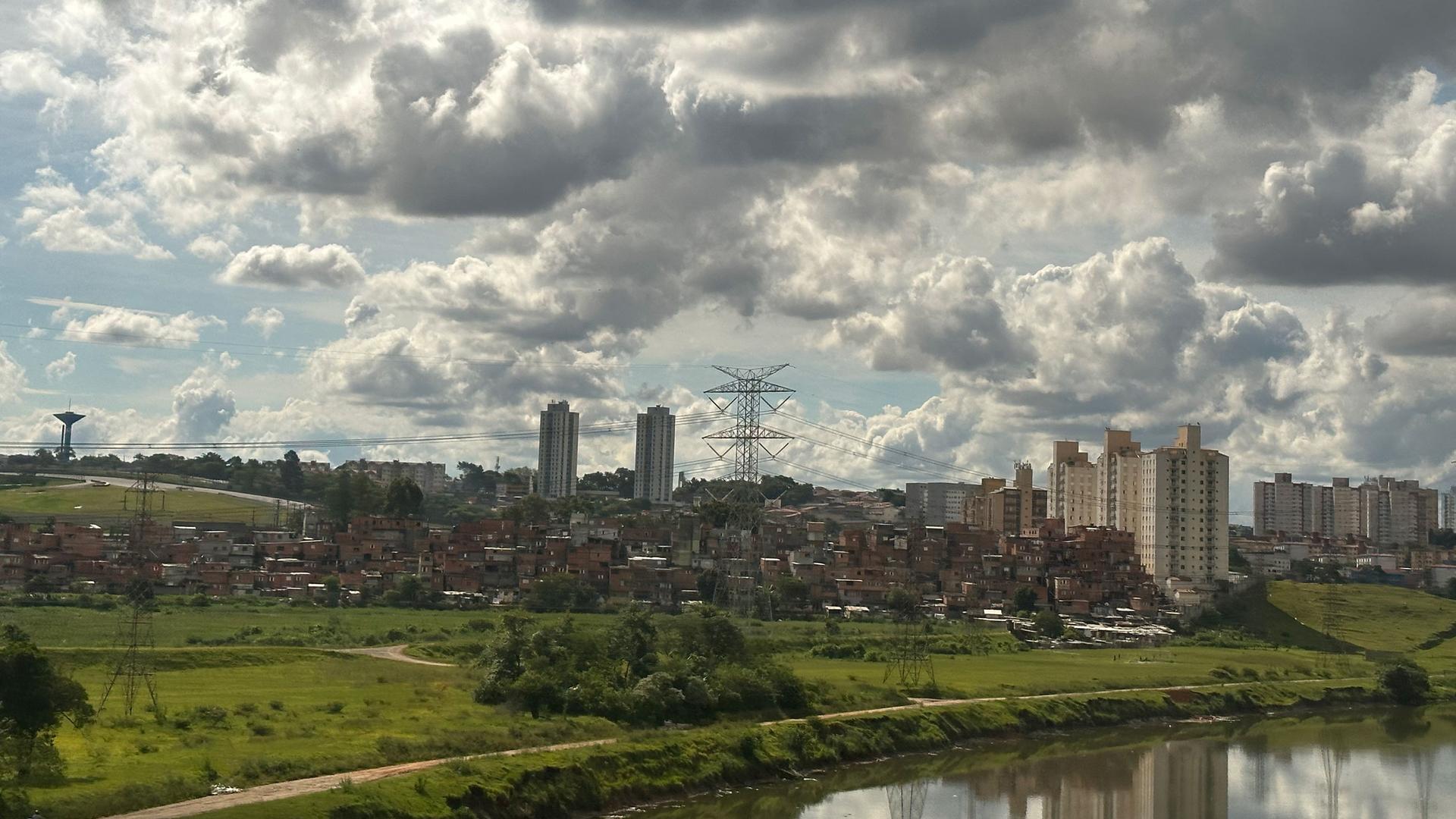At the very end of the Emerald Line 9 is Vila Natal, a neighborhood located about 18 miles south of downtown São Paolo, Brazil.
The final stop is full of enthusiastic vendors – who sing, act and rhyme – offering up fake Apple watches, Trident chewing gum in bulk, electric shavers.
The neighborhood is one of several enclaves where Venezuelan families live. Like Yoselin Calcurian, who is 35, married and has three kids: Santiago, 13, Sofia, 9, and Josué, 4.
This year marks the fifth anniversary of the massive migration of Venezuelans. Since 2018, more than 7 million people have fled the country due to political chaos and economic collapse. About 400,000 of them went to Brazil, where they have struggled to find jobs and learn a new language.
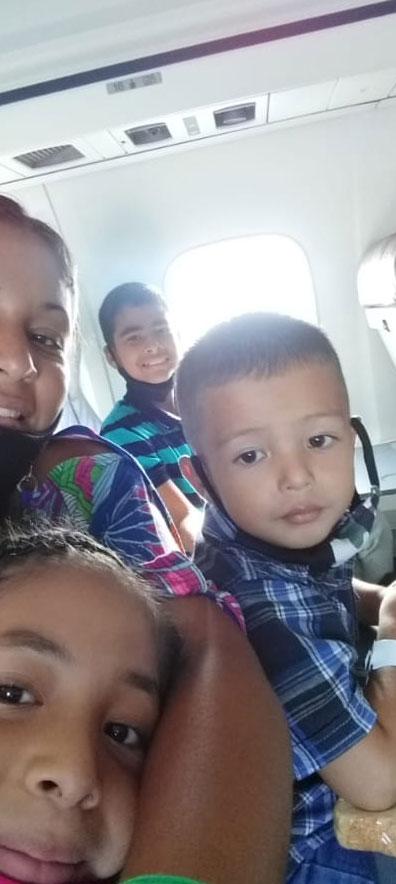
Calcurian left Venezuela in June of 2021. Her husband said he didn’t want to come, so she grabbed her kids and left him behind.
“He kept saying that if he was going to struggle, he wanted to struggle in his own country. And I said, ‘You can go ahead and struggle in your country, because I’m leaving,'” she said.
Journeys like hers happen every day to Brazil.
According to the Brazilian Federal Police, 17,397 Venezuelans entered the country in February, more than in January and an increase of almost 40% from the same month last year.
Calcurian used to work as a school secretary in Ciudad Bolívar, in eastern Venezuela. She says it was very hard to survive, even though she owns a house there.
“Our whole salary would go toward food. And it would only last for three days. For the rest of the month, we needed to figure out how to buy groceries again,” she said.
After they first arrived in Brazil through the border, Calcurian and her kids spent three months in shelters in Pacaraima and Boa Vista, in the northern state of Roraima.
Vila Natal in São Paulo was not really her choice.
“I didn’t choose it,” she said.
“When they were doing the interiorization process they asked if we had anyone who would host us. We didn’t have anyone, we don’t know anyone here.”
The interiorization program, started in 2018, voluntarily relocates Venezuelan refugees from the northern states to other cities in the country. The program is run by the federal government, with support from the United Nations refugee agency and several partner organizations.
A shelter in Vila Natal had free spots. Calcurian and her kids lived in the shelter for a few months, and then she was able to rent a one-bedroom apartment. She converted the kitchen into a second bedroom and created a cooking area outside.
‘We weren’t prepared’
The mass migration of Venezuelans to Brazil caught many by surprise.
“We weren’t prepared to receive such a large number of migrants, and people don’t stop coming,” said Carolina Nunes, manager of operations and partnerships at the nonprofit Refúgio 343 in Brazil.
“It’s really a crisis. A crisis that keeps happening and doesn’t stop.”
Refúgio 343 helps migrants with education, health services and they partner with companies to find people jobs.
Brazil has an unemployment rate of 7.9%. That’s half of what it was in 2020, but that doesn’t mean migrants can get good jobs.
Nunes said many migrants end up working in the meatpacking industry, a sector that has challenges recruiting Brazilians because of the tough nature of the work.
“There is a whole HR team of the meat processing company JBS based at the Welcoming Operation. They hire refugees for all its plants in Brazil,” she said.
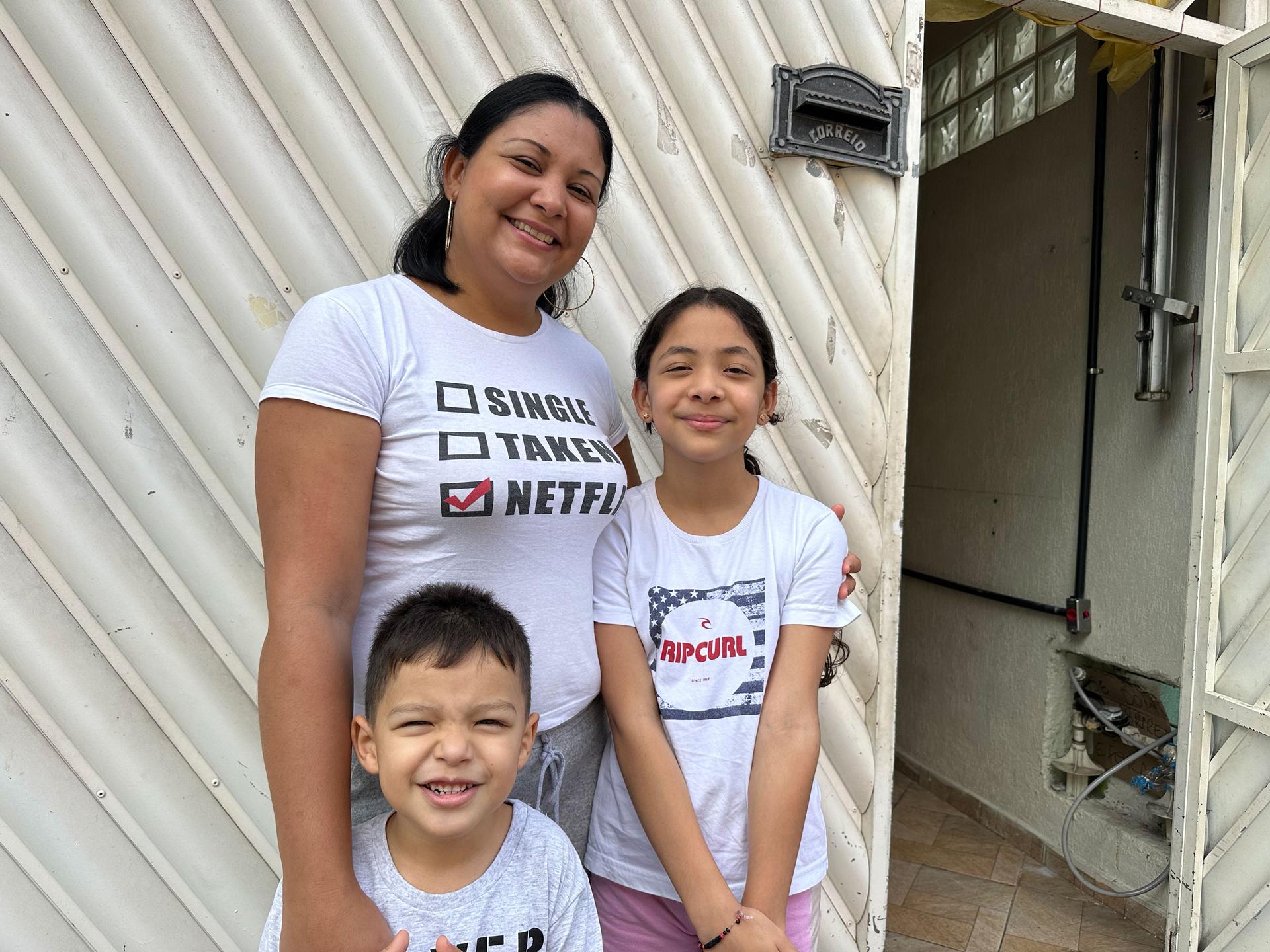
A week after Calcurian left Venezuela, her husband also left the country, but the pair did not reunite until months later.
Calcurian’s husband now has one of those jobs at a chicken processing plant in São Paulo. But Calcurian herself is unemployed. She used to work remotely selling ads in Spanish, but she was laid off last year and hasn’t been able to find a new job.
“I lost some jobs because I can’t speak Portuguese well,” she said.
Calcurian has temporary residence in Brazil, and she has the right to work. Venezuelans here can also apply for refugee status, if they intend to stay in Brazil permanently. Calcurian holds a two-year, renewable residence visa. But she said she wants to return to Venezuela.
Her oldest son Santiago López, who is studying computer programming, wants to go back to Venezuela, as well. He misses his dad (who is different from his younger siblings’ father) and he is struggling to adapt to Brazilian culture.
“It’s so different, if I were to tell you I would spend three hours doing so,” he said.
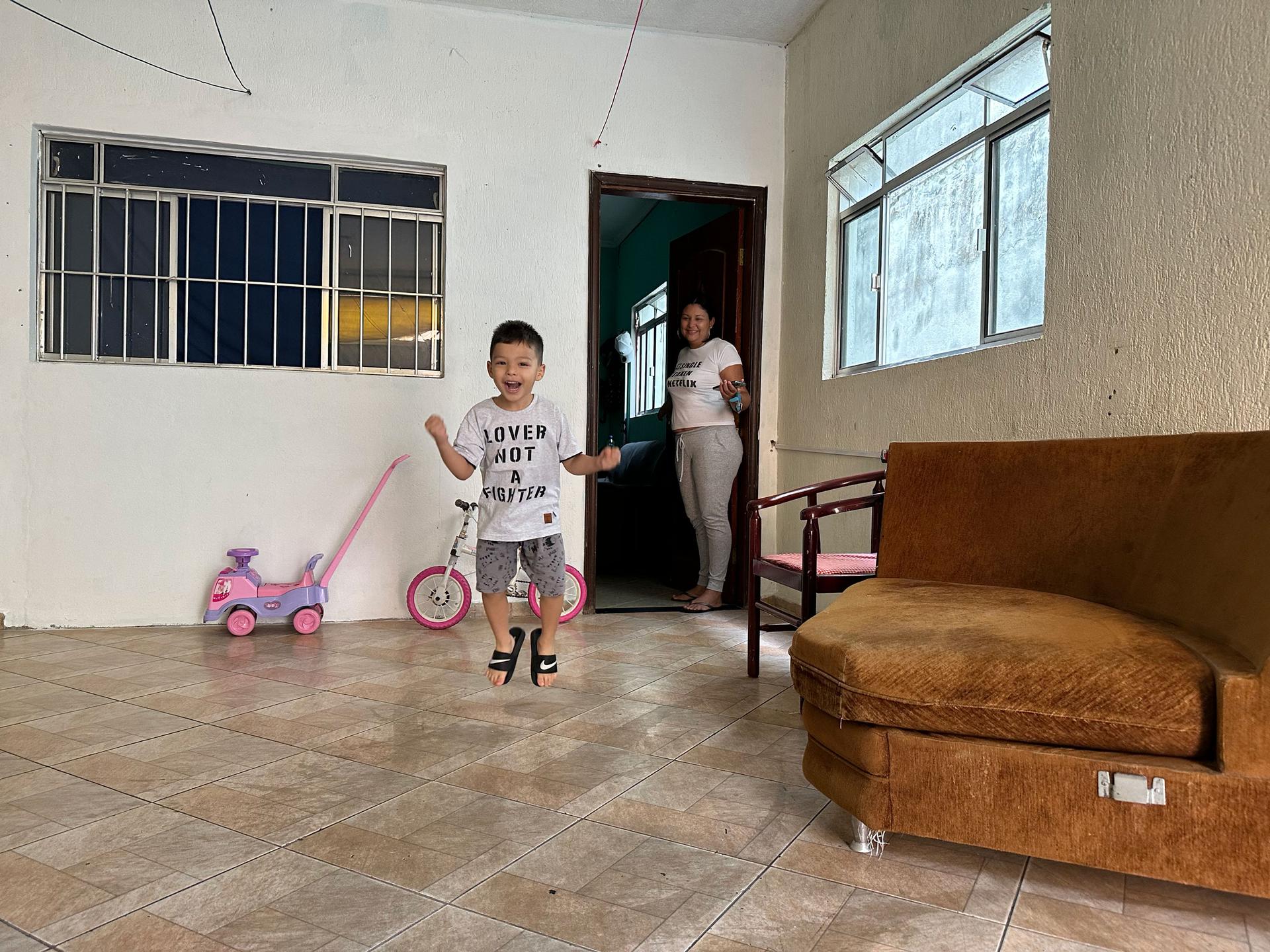
Donor fatigue
Thalita Iamamoto, who coordinates service to refugees at Caritas, the relief agency of the Catholic Church, said that donor fatigue is a major concern in dealing with the Venezuelan crisis.
“Everybody is a bit tense, wondering how this is going to work, because the Welcoming Operation has a smaller budget now, and countries are not donating as much compared to when the crisis first exploded, in 2018,” she said.
Iamamoto said the demographics of the migrants they serve is also changing.
“Because of the Venezuelan migration, in 2021 we served more women than men for the first time,” she said.
In 2016, only 36% of the refugees they served were women. In 2021, that number jumped to 52%.
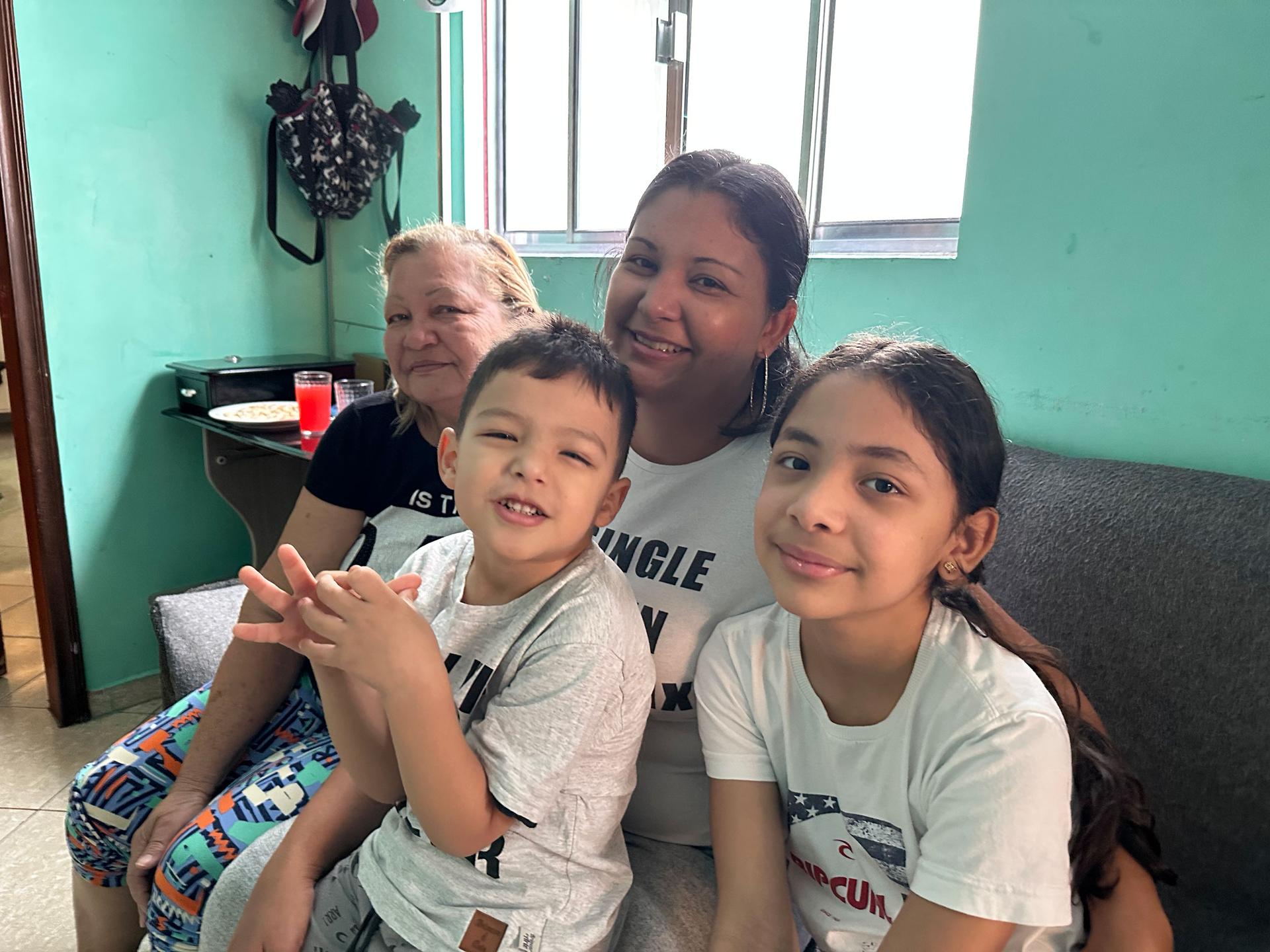
This month, four more of Calucurian’s family members arrived in Vila Natal, São Paulo, from Venezuela.
She said they decided to move to a smaller city, in the southern state of Santa Catarina, where they believe it might be easier for everyone to get jobs.
“We have to fight, because it’s hard here, so we have to try someplace else,” she said.
In her case, women are leading the way. Her niece is already there and at the end of April, Calcurian is planning on moving with her kids. Her husband will follow later.
Editor’s note: Vanessa Regatão provided production assistance with this story.
Our coverage reaches millions each week, but only a small fraction of listeners contribute to sustain our program. We still need 224 more people to donate $100 or $10/monthly to unlock our $67,000 match. Will you help us get there today?
